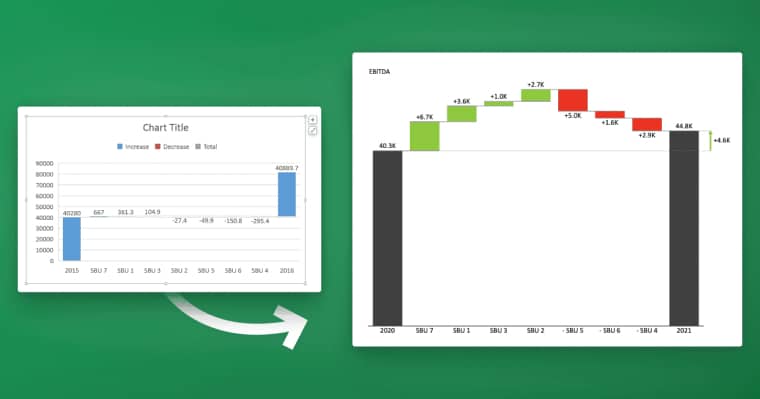If you are working with Power BI and DAX, you may come across a need to define not equal to conditions. Not Equal to is a logical operator used in DAX to compare two values. In this article, we will explore the basics of DAX, introduce you to Data Analysis Expressions (DAX), and dive into understanding the Not Equal to operator in DAX.
Table of Contents
Understanding the Basics of DAX and Power BI
DAX is a formula language used in Power BI and other Microsoft tools to create custom calculations for data analysis. It is similar to Excel functions, but more advanced and aimed at data modeling and complex analysis of large datasets.
Power BI, on the other hand, is a data visualization and business intelligence tool used for creating interactive dashboards and reports. It allows users to connect to various data sources, transform and manipulate the data, and create compelling visuals to highlight insights and trends.
One of the key benefits of using DAX in Power BI is the ability to create calculated columns and measures. Calculated columns are created by defining a new column based on an existing column, while measures are created by defining a calculation based on one or more columns in a table. These calculations can be used to perform complex analysis and create custom metrics that are not available in the original data source.
Introduction to Data Analysis Expressions (DAX) in Power BI
DAX functions are used to calculate and analyze data in Power BI. One of the main advantages of DAX language is that it allows users to create custom calculations, build hierarchies, and define relationships between tables.
DAX has a wide range of functions that can be used in Power BI, including logical, statistical, mathematical, and text functions. Each function takes one or more arguments and returns a value. The arguments can be constants, cell references, or other functions.
Another advantage of DAX is that it allows for time intelligence calculations, which are essential for analyzing data over time. Time intelligence functions in DAX can be used to calculate year-to-date, month-to-date, and other time-based calculations.
In addition to functions, DAX also includes operators that can be used to perform mathematical operations, such as addition, subtraction, multiplication, and division. These operators can be used in combination with functions to create more complex calculations.
What is Not Equal to Condition in DAX?
The Not Equal to operator is a logical operator that returns TRUE if the two values being compared are not equal to each other. In DAX, the Not Equal to operator is denoted by the symbol ‘<>‘, which is similar to Excel.
For example, the following formula will return TRUE if the value in column A is not equal to the value in column B:
= A <> BIt is important to note that the Not Equal to operator can also be used in combination with other operators, such as the AND and OR operators. This allows for more complex conditions to be created, such as checking if a value is not equal to one value AND not equal to another value.
Additionally, the Not Equal to operator can be used with both text and numerical values in DAX. This makes it a versatile operator that can be used in a variety of scenarios, such as filtering data or creating calculated columns.
Why Not Equal to Operator is Important in Power BI?
The Not Equal to operator is a critical component of DAX formulas in Power BI. It allows users to filter data based on a condition where two values are not equal to each other. It can be used to exclude data that does not meet a specific condition, or to include only data that meets the defined criteria.
For example, suppose you want to analyze data for customers who have not made any purchases in the last 30 days. In this case, you would use the Not Equal to operator to compare the ‘Last Purchase Date’ column with today’s date and filter out all customers whose last purchase date is within the last 30 days.
Another important use of the Not Equal to operator is in identifying and removing duplicates from a dataset. By comparing two columns and filtering out all rows where the values in those columns are equal, you can easily remove duplicate entries. This is particularly useful when dealing with large datasets where duplicates can skew your analysis and lead to inaccurate results.
How to Use Not Equal to Operator in DAX Formula?
To use the Not Equal to operator in DAX formula, you need to follow a simple syntax:
= value1 <> value2Where value1 and value2 can be any constant, column reference, or another function that returns a value. The Not Equal to operator returns TRUE if value1 is not equal to value2.
For example, if you want to filter all the customers whose age is not 30, you can use the following DAX formula:
= FILTER(CustomerTable, CustomerTable[Age] <> 30)The Not Equal to operator can also be used in combination with other operators to create more complex conditions. For instance, you can use the Not Equal to operator along with the AND operator to filter customers whose age is not 30 and whose gender is not male. The DAX formula for this would be:
= FILTER(CustomerTable, CustomerTable[Age] <> 30 && CustomerTable[Gender] <> "Male")Similarly, you can use the Not Equal to operator along with the OR operator to filter customers whose age is not 30 or whose gender is not male. The DAX formula for this would be:
= FILTER(CustomerTable, CustomerTable[Age] <> 30 || CustomerTable[Gender] <> "Male")Examples of Using Not Equal to Operator in DAX Formula
Here are some additional examples of using the Not Equal to operator in DAX formula:
= SUMX(FILTER(SalesTable, SalesTable[Region] <> "West"), SalesTable[SalesAmount])In the above example, the Not Equal to operator is used to filter all the sales that did not occur in the West Region. The formula then sums up the sales amount for the remaining regions.
= AVERAGEX(FILTER(CustomerTable,CustomerTable[Gender] <> "Male"),CustomerTable[Age])This formula calculates the average age of all the female customers in the CustomerTable.
Best Practices for Using Not Equal to Operator in DAX
When using the Not Equal to operator in DAX, it’s essential to follow best practices to ensure the formula’s accuracy. Here are some tips to keep in mind:
- Use the Not Equal to operator with caution if there are NULL values in the data. NULL values are treated differently in DAX, and a comparison with NULL using the Not Equal to operator may not give expected results.
- Ensure that the values being compared have the same data type. Comparing values with different data types may result in errors or unexpected results.
- Use the FILTER function to create row context and then apply the Not Equal to operator. This method ensures that the filter context is maintained and improves the formula’s performance.
Common Mistakes to Avoid While Using Not Equal to Operator in DAX
While using the Not Equal to operator in DAX, it’s essential to avoid making common mistakes that can lead to incorrect results. Here are the most common pitfalls to avoid:
- Using the Not Equal to operator with date or time values without using the DATEVALUE function. The DATEVALUE function is used to convert a date or time into a DAX-compatible format.
- Using Not Equal to operator with strings that contain special characters. It’s essential to enclose the string in double quotes or use a backslash () to escape those characters.
- Making a comparison with values that contain spaces or trailing spaces. This mistake can lead to unexpected results.
Advanced Techniques for Using Not Equal to Operator in DAX
There are many advanced techniques for using the Not Equal to operator in DAX to create complex calculations and analysis. Here are some examples:
- Using the Not Equal to operator with a function that returns multiple values, such as the SWITCH function.
- Using the Not Equal to operator with the IF function to create conditional statements in the formula.
- Using the NOT function with the Equal to (=) operator to create a Not Equal to condition.
How to Debug and Troubleshoot Issues with Not Equal to Operator in DAX
If you encounter any issues with using the Not Equal to operator in DAX, it’s essential to use the DAX Debugger and other troubleshooting techniques to identify and resolve the problem. Here are some tips:
- Check the syntax of your formula for any typos or mistakes.
- Use the DAX Formatter to format your formula and make it easy to read and debug.
- Use variables to break down complex formulas and make them easier to track and troubleshoot.
- Use the EVALUATE function to test the formula and see the values of the expression and the results.
Optimizing Performance of Your Power BI Reports with Not Equal to Operator in DAX
Using the Not Equal to operator in DAX can affect the performance of your Power BI reports, especially if you’re dealing with large datasets. Here are some tips to optimize the performance of your reports:
- Filter the data using the Not Equal to operator as early as possible in the formula to minimize the number of rows being processed.
- Aggregate the data using the SUMMARIZE function to reduce the number of rows being processed. This function can be used to summarize the data based on one or more columns.
- Use the CALCULATE function to optimize the formula and avoid unnecessary calculations.
- Use the SELECTCOLUMNS function to retrieve only the required columns and avoid unnecessary column processing.
Enhancing the Quality of Your Data Analysis with Not Equal to Operator in DAX
The Not Equal to operator in DAX can be used to enhance the quality of your data analysis by filtering out unwanted data and highlighting meaningful insights. Here are some ways to use the Not Equal to operator to achieve better data analysis:
- Filter out null or missing values from the data to ensure the accuracy and completeness of the analysis.
- Filter out data that does not meet specific criteria to focus on relevant information.
- Apply Not Equal to operator on different variables and see the combinations of all possible values displaying unique results.
- Use the Not Equal to operator to highlight trends and patterns that may be hidden in the data.
Conclusion: Mastering the Art of Defining Not Equal to in Dax for Power BI
The Not Equal to operator is a powerful tool in DAX for comparing two values and filtering data based on a condition. In this article, we covered everything you need to know about using the Not Equal to operator in DAX formulas, including best practices, common mistakes to avoid, advanced techniques, and troubleshooting tips. By following these guidelines, you can take your data analysis in Power BI to the next level and uncover valuable insights that help you make better business decisions.














